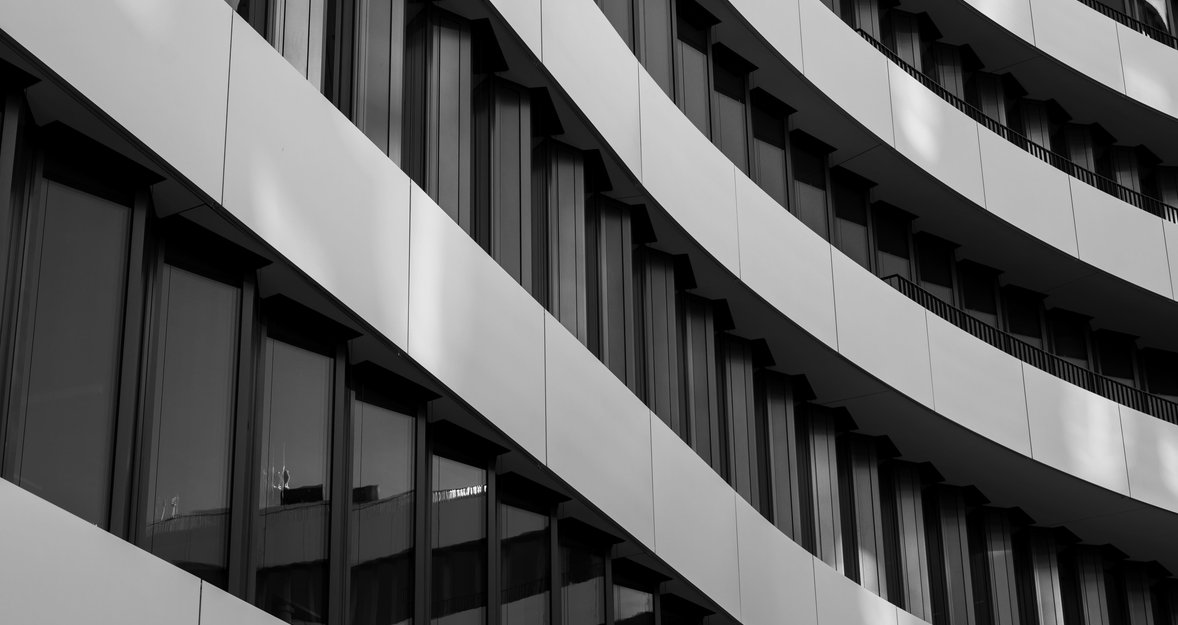Curved Line Photography Composition Guide
November 06, 2024

In this guide, you explore techniques to add curves to your work and how to use them in composing photographs to take your visuals to the next level.
One of the most effective techniques available to a photographer is using curves. They establish spatial continuity, manage the gaze, call for further action, and stir emotion. Ansel Adams and Henri Cartier Bresson are renowned photographers whose works have greatly improved with the addition of curves.
Adams' widely recognized image, "Clearing Winter Storm, Yosemite National Park," captures the valley's curved shape and the mountain range's striking curves. There cannot be another better example of types of curved lines illustrated than in Cartier-Bresson’s "Behind the Gare Saint-Lazare," where the man leaps over a puddle.
What Are Curved Lines in Photography
 "Curves photography definition" refers to sticking with the Golden Ratio, a mathematical ratio that is commonly seen in nature and art. In contrast to straight vertical, horizontal, or diagonal lines, curves can point the viewer around the image. Of these curves, the S curve composition is commonly used. It works great with the female body, guiding the viewer’s eye around the picture at a slow pace. A picture composed of straight and curved lines can create an effect of depth and dynamics.
"Curves photography definition" refers to sticking with the Golden Ratio, a mathematical ratio that is commonly seen in nature and art. In contrast to straight vertical, horizontal, or diagonal lines, curves can point the viewer around the image. Of these curves, the S curve composition is commonly used. It works great with the female body, guiding the viewer’s eye around the picture at a slow pace. A picture composed of straight and curved lines can create an effect of depth and dynamics.
Let's summarize: curves are forms of an aesthetic process of capturing shapes, forms, and textures, particularly the human body or other objects. Knowing basic aspects helps use light and choose the angle or position of the subjects properly.
Psychology research shows that people generally prefer images with curved elements, as they look more natural or soft than straight lines.
C Curve Photography Examples
 The C-curve is one of the standard forms of composition in photography. "Leading lines in photography definition" highlight key compositional elements engaging viewers and direct attention through the photograph.
The C-curve is one of the standard forms of composition in photography. "Leading lines in photography definition" highlight key compositional elements engaging viewers and direct attention through the photograph.
Semi-circles are seen in many natural forms. Often, they are used as tailored elements in architecture and, sometimes, in posed subjects.
Arches
 Arches belong to curve shapes. Perhaps you saw them today in ordinary buildings or in their natural state in rocks. Some photographers prefer using visuals with more arch whenever possible and exploiting repetitive curves.
Arches belong to curve shapes. Perhaps you saw them today in ordinary buildings or in their natural state in rocks. Some photographers prefer using visuals with more arch whenever possible and exploiting repetitive curves.
S Curve Photography Examples
 What is S curve in photography? It is a strong visual cue that directs the viewer's attention from one area to another. An "S"-shaped line appears to lead our gaze from the foreground deeper into the frame.
What is S curve in photography? It is a strong visual cue that directs the viewer's attention from one area to another. An "S"-shaped line appears to lead our gaze from the foreground deeper into the frame.
Country roads that run along the contours of hills, valleys, or through forests tend to build a natural S-curve that guides the sight towards the horizon line.
Circles
 Circles can be discovered in the natural world as waves on water or a pool of rainwater or in man-made things as well.
Circles can be discovered in the natural world as waves on water or a pool of rainwater or in man-made things as well.
In architecture, it is possible to meet some compositions that include several curves at once, creating depth in the picture.
Sand Dunes
 Capture coastal or desert areas where dunes naturally form curves. The ripples and shapes in the sand can create beautiful S-curves, especially during golden hour light.
Capture coastal or desert areas where dunes naturally form curves. The ripples and shapes in the sand can create beautiful S-curves, especially during golden hour light.
Architecture
 Search for buildings or structures with rounded elements, such as spiral staircases, curved balconies, or arches.
Search for buildings or structures with rounded elements, such as spiral staircases, curved balconies, or arches.
Dancers and Movement
 Capture dancers or athletes in motion, where their body positions create natural shapes. An S-curve in a pose can add grace and dynamism to the photograph.
Capture dancers or athletes in motion, where their body positions create natural shapes. An S-curve in a pose can add grace and dynamism to the photograph.
Implied Curves
 Implied curves are created when objects in the frame point to them. The photographer needs to work to find an object and point of view, which are in a certain way giving an impression of the definite shape, or, on the contrary, find out how to take the shot that will show the object and draw the definite size on the plane of the photograph.
Implied curves are created when objects in the frame point to them. The photographer needs to work to find an object and point of view, which are in a certain way giving an impression of the definite shape, or, on the contrary, find out how to take the shot that will show the object and draw the definite size on the plane of the photograph.
How To Photograph Curved Lines Skillfully
 Typically, photographers shooting the elegance of lines look for subjects with natural arcs, loops, and spirals, which deliver movement and focal interest within a frame. Curved lines in nature, like winding rivers or bending tree branches, naturally draw the eye and add organic, calming elements to a photograph. The intricate spirals of historical staircases and the gentle contours of a dancer’s position add to the image's dynamic effects.
Typically, photographers shooting the elegance of lines look for subjects with natural arcs, loops, and spirals, which deliver movement and focal interest within a frame. Curved lines in nature, like winding rivers or bending tree branches, naturally draw the eye and add organic, calming elements to a photograph. The intricate spirals of historical staircases and the gentle contours of a dancer’s position add to the image's dynamic effects.
Let's make an example. You're strolling through the city and come across a building with intricately patterned walls that spiral to the roof. You are inspired, so you take out your camera to attempt to capture the beauty of its curves. A few quick clicks alone can only capture the elegance of those lines if you have a keen eye and a few well-chosen techniques. What would you do to make sure that image embodies that magical aspect of those curves?
Create Composition And Perspective
Composition is the art of putting parts of your frame together. It can lead the viewer’s eye to where they should go and deliver your message. The Rule of Thirds, which places a focal point at an intersection of a 3x3 grid or using a leading line (a road or river, for example), focuses people’s attention on the subject.
Perspective composition (forced perspective) is a technique that is heavily used in different mediums, from architecture to filmmaking to photography. This style of photography gives the viewer whimsical and artistic images so that they seem to be surreal and dreamlike. Filmmakers have used forced perspective to suit visual storytelling, especially in Citizen Kane, the early Godzilla series, Harry Potter, and many more.
Perspective gives your photos depth and dimension. Shooting from low or high vantage points can change a scene. Foreground elements can add depth or framing. For example, using a natural doorway or arch gives the appearance of focus on your main subject.
Harness the Power of Light and Shadow
Photography is all about light and shadow. They can create or ruin your images. You can learn how to manipulate them to raise the mood, depth, and dimension.
Natural light. Soft, warm light with long shadows you can get with the golden hour. Bold compositions work well with harsh midday sunlight, creating strong contrasts and intense shadows.
Shadow play. Shadows add intrigue and drama to your shots. Find interesting patterns created by light passing through objects (shadows of leaves, fences, or habits) or structures to give your photo depth.
Backlighting. Shooting into the light often produces silhouettes, which highlight shape and form, making the game of light and shadow.
Refine Your Images in Post-Processing
The magic happens; in fact, post-processing your RAW captures beautiful visual narratives. Are you curious about how to curve a photo? Use photo editor curves. With color correction, you can alter the colors to make them dimmer or brighter, depending on what atmosphere you wish to portray.
Cropping can change your composition and direct the viewer’s eye to the right object. Adding a subtle vignette or making a B&W photo can evoke emotion and tell a deeper story.
Be Inspired By Professionals
Edward Weston – Curved Lines in Nature
Known for turning everyday objects into sculptural masterpieces, Edward Weston masterfully captured the natural curves found in seashells, peppers, and leaves. His use of organic forms and soft shadows invites viewers to see nature's rhythm through a lens of intimacy and abstraction.

Henri Cartier-Bresson – The Decisive Flow of the Frame
A pioneer of street photography, Cartier-Bresson used curved lines in alleys, arches, and winding staircases to lead the viewer’s eye and freeze fleeting moments in time. His intuitive sense of geometry gave movement and fluidity to everyday life.
Hiroshi Sugimoto – Time Bends Light
Sugimoto’s minimalist seascapes and architectural studies explore the curve of light, time, and perception. His long exposures blur horizons and soften edges, turning straight lines into meditative gradients and revealing the subtle curvature of stillness.
Oleh Oprisco – Surreal Stories in Soft Shapes
Ukrainian photographer Oleh Oprisco creates dreamlike compositions where curved lines emerge in the flow of dresses, props, and body language. Every image feels like a poetic fairytale, where form and meaning blend through motion and emotion.
Michael Kenna – The Silent Arc of Landscape
Kenna’s black-and-white landscapes are known for their quiet elegance. Curved tree trunks, winding roads, and fog-veiled hills create visual poetry, where every line bends gently toward stillness and contemplation.

Ernst Haas – Motion Made Visible
A pioneer of color photography, Ernst Haas used motion blur and panning techniques to transform busy streets and moving figures into sweeping arcs of light and color. His curved lines weren’t just compositional—they were emotional.
Fan Ho – Urban Flow and Architectural Elegance
In the dense cityscape of mid-century Hong Kong, Fan Ho sculpted light and shadow into curved staircases, arched alleyways, and flowing human forms. His work turns chaos into choreography, where every curve serves the rhythm of the street.

There is much to learn from these artists: explore lighting techniques and angles. Inspiration is everywhere; you only have to find it!
The Bottom Line
To master this fascinating sphere, practice and experiment are the only things that may help you. Find that particular technique that sets you apart from the rest. We live in a world where it is possible to find curvatures of different degrees, starting from a simple curve of a leaf and ending with intricate constructions.
Even the basic camera settings play a role. Remember that even after taking the picture, you can still "paint" with light; post-production can add a new dimension to a photo and can give that curve factor a boost.
Now, you’re ready to grab your camera to see where your imagination can take you.
FAQ
Why are curved lines effective in photography?
The objectives include continually leading the viewer’s attention across the picture plane through lines and form. Curves in photography, as distinctions from straight lines, make compositions more interesting by stirring up emotions.
How do curved lines influence the mood of an image?
They are known to introduce changes and affect the mood of an image more than straight lines. • Soft curves. Smooth corners and lines are arguably the opposite of sharp corners and lines and are mostly associated with water and soft terrains. • Dynamic curves. Sharp contours convey dynamics, bringing into the picture an element of enthusiasm, the rounded belly-like contours of a dancer, or a winding road. • Contrasting lines. Crossing curved lines with straight ones gives the image tension, which is good for the depth and mood of a shot.
What are common subjects or scenes that use curved lines?
Common subjects for using these elements include: • Natural landscapes. Rivers, hills, and paths that curve gracefully. • Architecture. Buildings with rounded features, archways, or spiral staircases. • Flora. The natural bends of flowers and plants. • Human figures. The dynamic lines of dancers or the soft lines of bodies. • Urban scenes. Roads, bridges, and railings that lead the eye along their curves.
How do I incorporate curved lines into my composition?
To effectively incorporate them into your composition, follow these five basic steps: • Find natural curves. Look for elements in your landscape, like paths or rivers, that feature a natural beauty. • Use leading lines. Position curves to act as leading lines, guiding the viewer’s gaze toward your main subject. • Experiment with angles. Change your shooting angle to highlight curves in the scene, revealing hidden shapes and adding depth. • Frame with curves. Use them to show your subject and give context, like a branch that curves around a flower. • Combine with other elements. Use curves and the Rule of Thirds to create balance.





